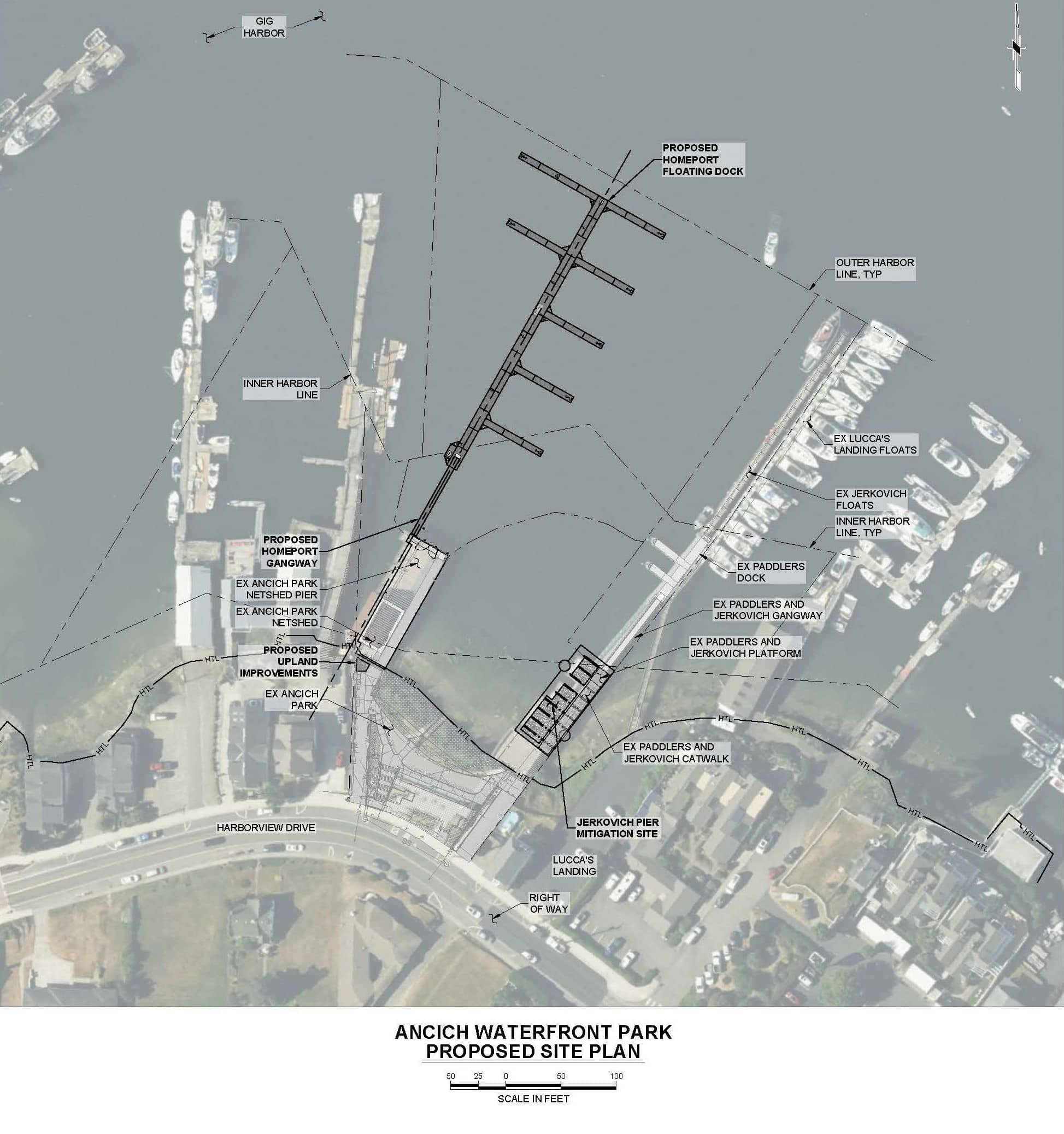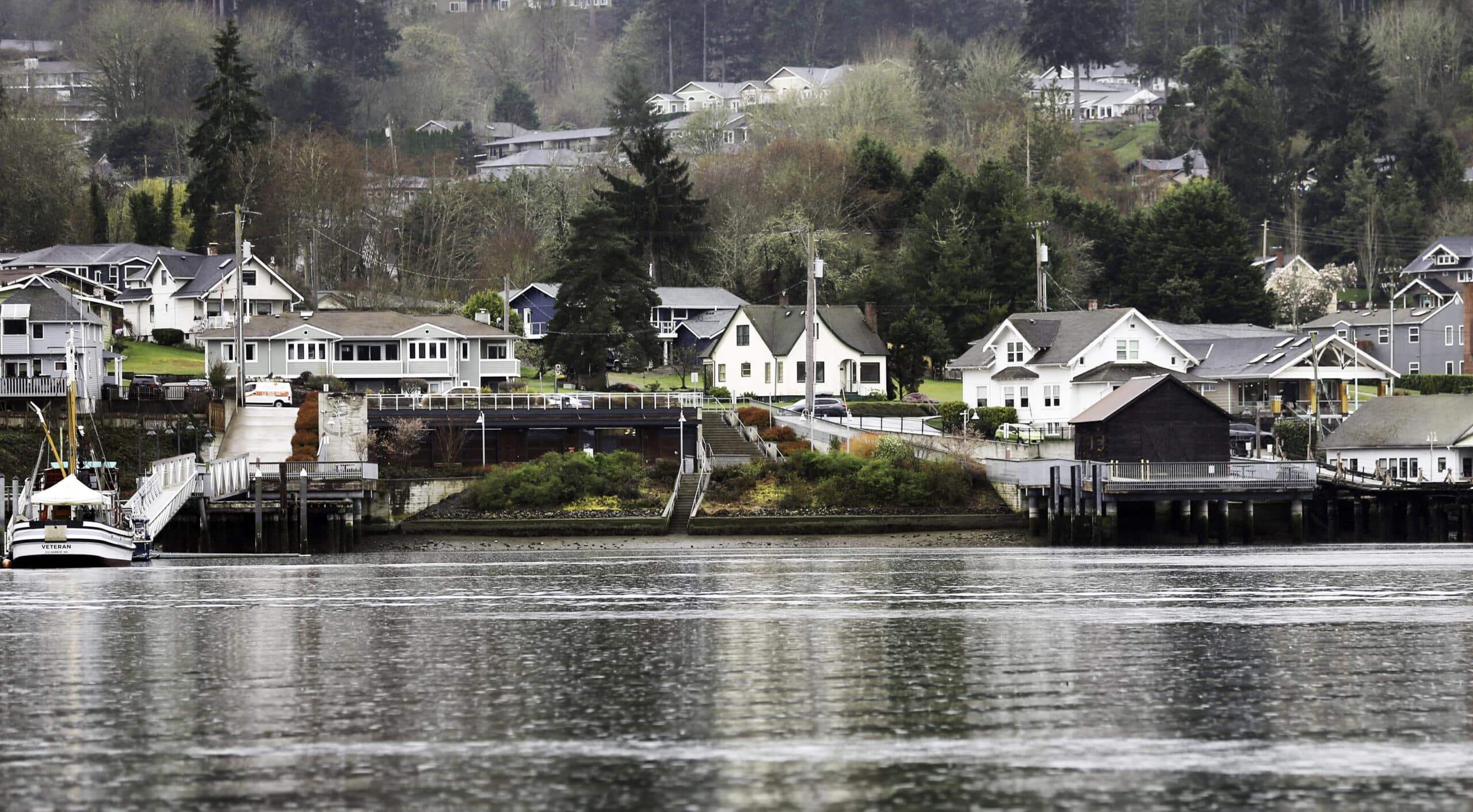Community Environment Government
Commercial Fishing Homeport construction won’t start this year
Construction of Gig Harbor’s Commercial Fishing Homeport project will not begin until July 2025 at the earliest, city Public Works Director Jeff Langhelm told the city council on Monday, May 13.
Community Sponsor
Community stories are made possible in part by Peninsula Light Co, a proud sponsor of Gig Harbor Now.
The homeport at Ancich Park has been planned since 2013 and is considered crucial to Gig Harbor’s commercial fishing industry. But obtaining approval for mitigation projects hit a snag this year.
Feds, state disagree on mitigation
Langhelm told the council that state regulators already approved three proposed projects to mitigate for environmental impacts of building the homeport. Such mitigation projects are state and federal requirements for work, like the Commercial Fishing Homeport pier, in environmentally sensitive areas.
The city’s proposed mitigation projects were removal of the Jerkovich Pier, and two projects related to a city stormwater outlet pipe between the Maritime Pier and the Tides Tavern.

The city of Gig Harbor’s plan for Ancich Park includes the Commercial Fishing Homeport, adjacent to the Paddler’s Dock.
Federal regulators from the National Marine Fisheries Service approved of removing Jerkovich Pier as one mitigation project. But they rejected the two stormwater-related projects, Langhelm said.
The city already has two other possible mitigation projects in mind that received a preliminary endorsement from NMFS. But now the city must seek state approval for those mitigation proposals.
Langhelm shared the news while asking the council to extend a contract for a consultant helping the city work through permitting and mitigation.
“Because of all this … (the city) won’t be able to move forward with construction of the homeport until July 2025 at the soonest,” Langhelm told the council.
The city council voted unanimously to authorize Mayor Tracie Markley to extend the contract, costing no more than $34,448. (That money comes from sources other than the city’s beleaguered general fund.)
Commercial fisherman Guy Hoppen, a longtime advocate of the project, called the further delay “disappointing,” noting that it “seems to be out of the city’s hands.” He sees the council’s unanimous vote to extend the consulting contract as an indication that the city still supports the Homeport.
Homeport delays
The $3.2 million homeport would provide moorage for 17 boats from the local commercial fishing fleet. Those boats currently tie up at privately owned docks, a situation which commercial fishermen say is unsustainable.
Proceeds from the city portion of the Real Estate Excise Tax would fund most of the construction. REET funds can only be used for capital projects. A Port of Tacoma grant and a $200,000 contribution from the Gig Harbor Commercial Fishermen’s Club are other funding sources.
The homeport has been part of the city’s plans for Ancich Park since 2013. But the city prioritized other projects at Ancich — including construction of a Paddler’s Dock that opened in 2022 — before proceeding with the homeport.
The current snag is over projects to mitigate any adverse environmental impacts the construction of a new overwater structure might cause. Everyone agrees on removal of the creosote-soaked Jerkovich Pier.

Ancich Park as seen from the eastern shore of Gig Harbor. City plans call for the Commercial Fishing Homeport on the right of this image.
Stormwater projects
Langhelm told the council that the state approved two projects related to the city’s stormwater outfall pipe as appropriate mitigation for the homeport. The pipe carries all the stormwater from the Soundview Drive area into the harbor.
The city proposed an energy dissipation project, effectively slowing the rate at which water spills from the pipe into the harbor. The second stormwater-related mitigation was rehabilitating the beach between Maritime Pier and the Tides Tavern and installing “beach nourishment” there. Beach nourishment refers to adding sediment, sand or gravel to the beach to compensate for erosion.
The stormwater projects will likely go ahead anyway, paid for by the city stormwater fund. But NMFS won’t count it as mitigation for the homeport.
Buying credits
Langhelm said NMFS tentatively approved two new proposed mitigations: Replanting underwater vegetation in the nearshore area outside Ancich Park; and buying mitigation “credits.”
The latter involved buying credits generated by another fish-friendly mitigation project in the South Sound region.
NMFS “supports” those ideas, Langhelm said. But now the city must restart the approval process with the state.
It’s unclear how much additional money the new mitigation measures might cost, if any. Replanting nearshore vegetation shouldn’t be too expensive, Langhelm indicated. But nobody knows exactly how much buying mitigation credits might cost, in part because the city hasn’t yet identified which South Sound project it might be able to buy credits in.
Hoppen said he and other members of the Commercial Fishermen’s Club are “hopeful that banked mitigation or mitigation credits can be purchased to expedite this mitigation process.”

